31 Oct, 2023
by Aditi Ghosh| Academic Officer| explorArchi
Bhopal, the capital city of Madhya Pradesh, India, is a historic blend of culture, heritage, and modernity. Nestled in the heart of the country, it showcases a rich tapestry of traditions and contemporary growth. Known for its serene lakes, Bhopal is often referred to as the "City of Lakes." Bhopal has shown remarkable resilience, gradually transforming into a hub of education, art, and commerce. The city's architecture mirrors its diverse past, with ancient mosques and palaces coexisting with modern infrastructure. Bhopal remains an emblem of India's cultural depth, resilience, and ongoing urban evolution.
Unveiling the Top Must-Visit Destinations
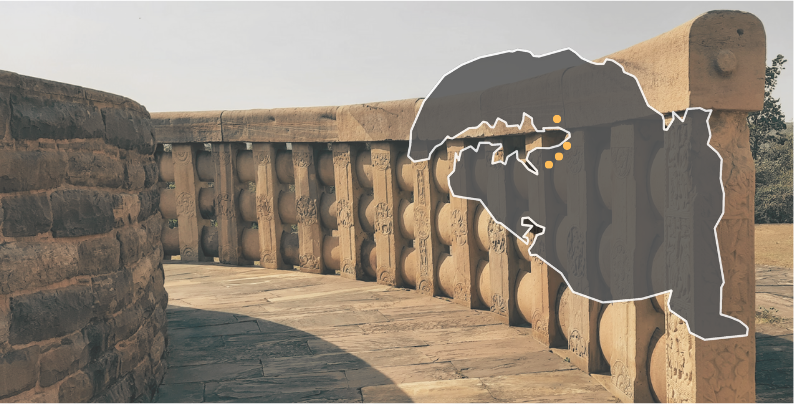
.png)
The ultimate travel guide to reach the
CITY OF LAKES!
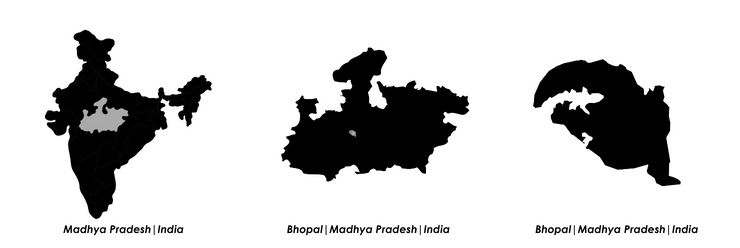
By Air : The major airport in Bhopal is the Raja Bhoj Airport, It's located about 15 kilometers northwest of the city center. This airport is well-connected to major cities in India.
By Train : The major railway station in Bhopal is Bhopal Junction, located centrally and is well connected to the different parts of the city making it accessible from all corners of the city.
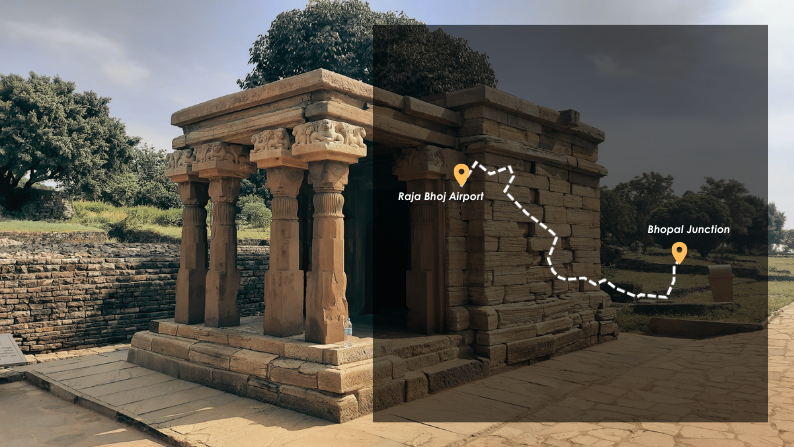
Arriving in Bhopal was like stepping into a vibrant tapestry of history and modernity. The blend of traditional architecture and bustling markets painted an enchanting picture. Exploring the city's treasures, like the breathtaking Taj-ul-Masjid and the intricate tribal museum, left me in awe of its cultural diversity. The aroma of local street food tempted my taste buds, offering a culinary adventure of flavors. And while strolling by the serene lakes, I couldn't help but reflect on the city's resilience in the face of challenges. Bhopal's charm is more than its sights; it's the symphony of experiences that made my visit unforgettable.
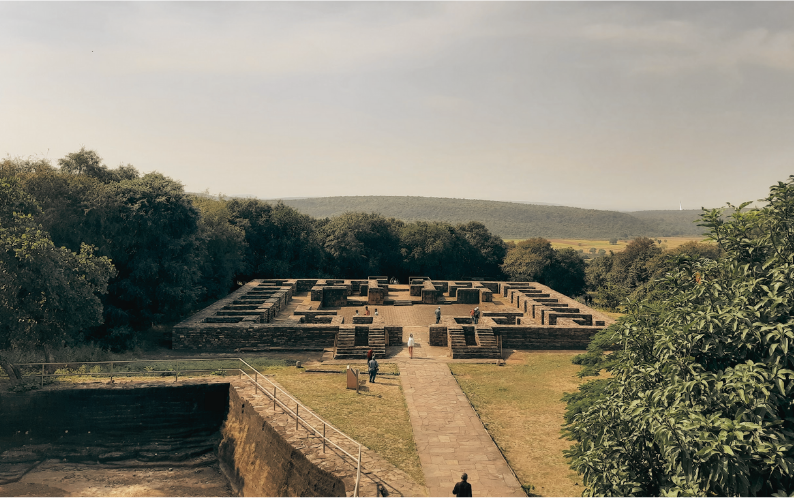
BHARAT BHAVAN
Bharat Bhavan, an iconic cultural complex in Bhopal, showcases unique contemporary architecture. Designed by renowned architect Charles Correa, it harmoniously blends modern design with traditional Indian elements. The complex comprises curved and sloping roofs, open courtyards, and juxtaposed structures that reflect Correa's signature style. Earthy materials like red sandstone and white marble dominate, integrating the structure with its surroundings. The distinctive design not only serves functional purposes for various arts but also creates a visual dialogue between tradition and modernity, making Bharat Bhavan an architectural marvel that resonates with India's diverse heritage.
.png)
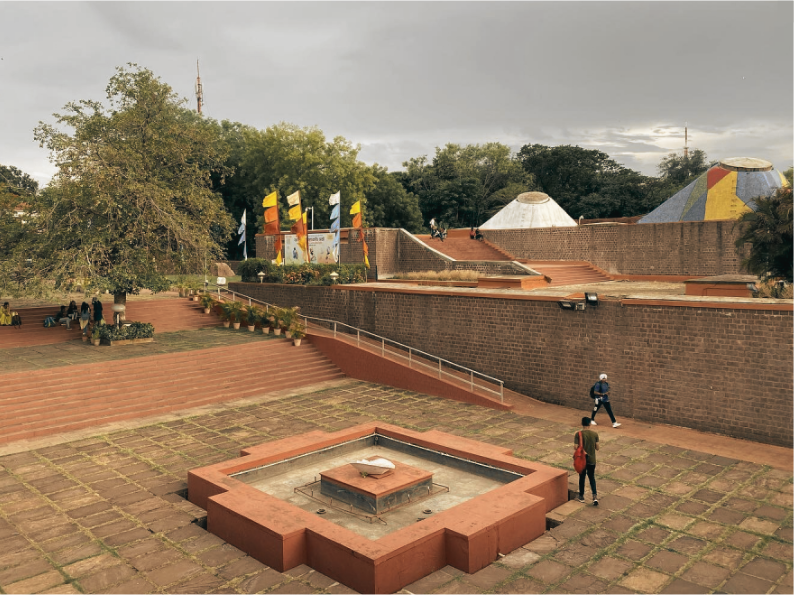
RASHTRIYA MANAV SANGRAHALAYA
Rashtriya Manav Sangrahalaya (National Museum of Mankind) is an architectural marvel located in Bhopal, India. Designed by Charles Correa, this unique museum embodies his philosophy of contextual modernism. The museum's architecture seamlessly blends traditional elements from various Indian cultures with modern design principles. The circular layout, inspired by the traditional Indian village concept, features huts and structures from different tribal communities across India, showcasing their diverse architectural styles. The red sandstone walls, sloping roofs, and open spaces create a harmonious environment. Correa's vision is evident in the use of local materials, sustainable design, and integration with nature. The result is an awe-inspiring architectural ensemble that celebrates India's cultural richness while embracing innovation, all within a vibrant and interactive museum space.
.png)
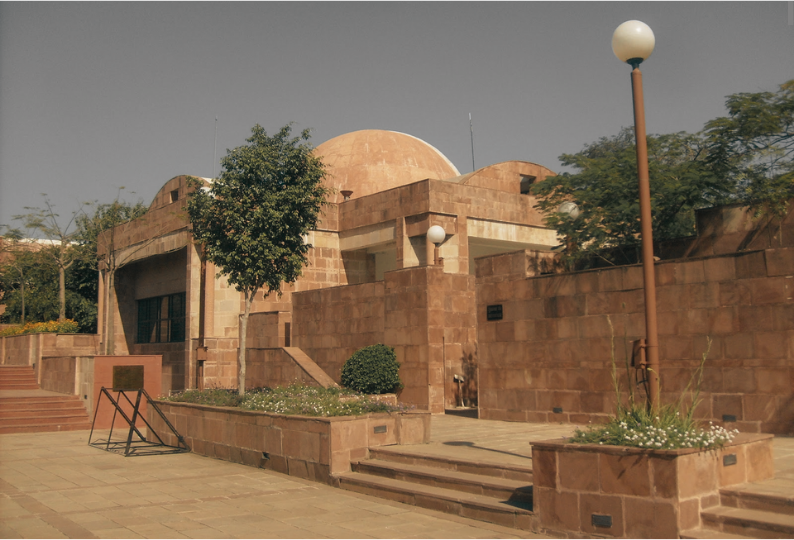
TRIBAL MUSEUM
The Tribal Museum in Bhopal is a testament to the rich architectural heritage of India's tribal communities. Designed by architect Revathi Kamath, the museum's architecture is a blend of traditional tribal motifs and modern design elements. The structure features s?loping roofs, inspired by tribal dwellings, and earthy materials like wood and bamboo that resonate with tribal construction methods. The exterior showcases intricate tribal patterns and artwork, paying homage to the diverse cultures it represents. Inside, the museum's layout echoes the organic arrangement of tribal villages, with interconnected spaces that lead visitors on a journey through indigenous cultures. The architecture not only houses artifacts but also becomes a cultural artifact itself, embodying the essence of India's tribal communities and their harmonious relationship with nature and tradition.
.png)
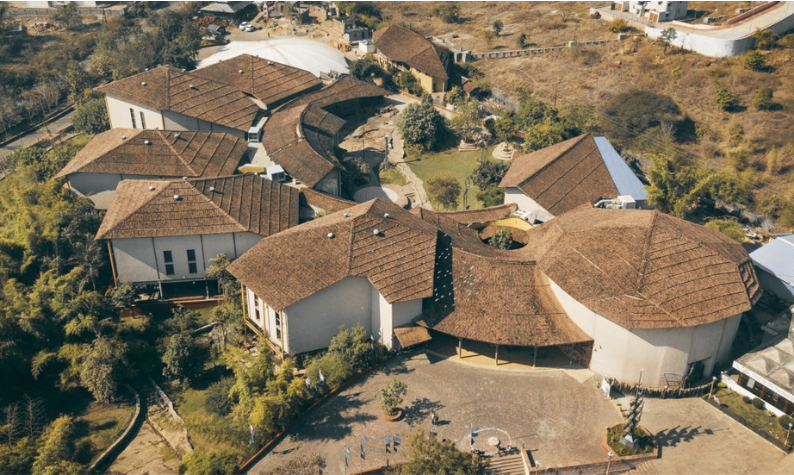
TEMPLE OF BHOJPUR
The Bhojeshwar Temple in Bhojpur, near Bhopal, is a marvel of architectural grandeur. Dedicated to Lord Shiva, this 11th-century temple is renowned for its colossal lingam, carved from a single rock and standing at around 18 feet tall. The temple complex displays intricate architectural details, featuring towering pillars with ornate carvings depicting mythological scenes and deities. The shikhara (tower) of the temple, although incomplete, showcases impressive craftsmanship. The temple's architecture exudes a sense of timeless elegance, with its simple yet awe-inspiring design. The use of large stone blocks and precise carvings reflects the architectural prowess of the era. This temple stands as a testament to the vision and engineering skills of ancient artisans, capturing the essence of Hindu temple architecture in its most majestic form.
.png)
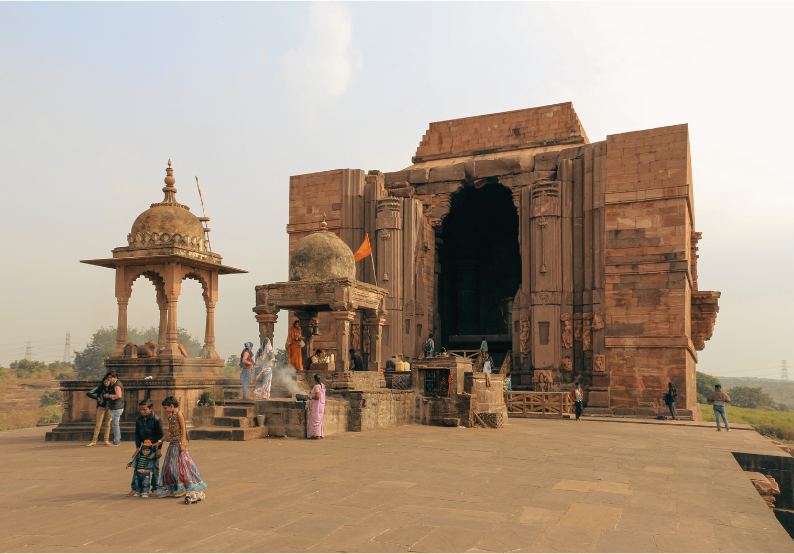
TAJ-UI-MASJID
The Taj-ul-Masjid in Bhopal, one of the largest mosques in India, showcases a splendid blend of Mughal and Indo-Islamic architecture. The grandeur of its pink façade, adorned with delicate minarets and onion-shaped domes, is truly captivating. The vast courtyard is flanked by imposing arched entrances, leading to a prayer hall adorned with marble flooring and intricate calligraphy. The three colossal onion domes dominate the skyline, each intricately decorated with finials and white marble. The interior exudes an aura of serenity, with ornate pillars supporting the arche?d roof. The blend of red sandstone and white marble creates a harmonious contrast, adding to the mosque's aesthetic charm. Taj-ul-Masjid's architecture is a testimony to the artistic brilliance of its creators, offering a glimpse into the rich cultural heritage of Bhopal.
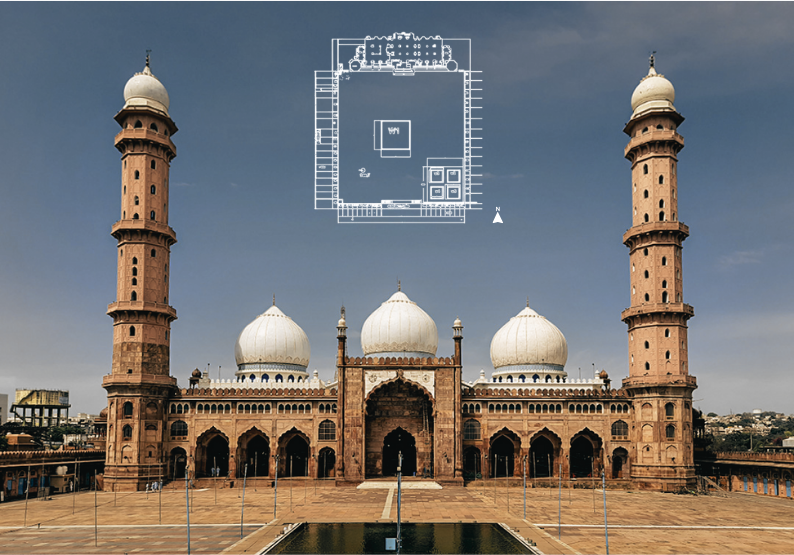
STUPA OF SANCHI
The Sanchi Stupa, a UNESCO World Heritage site, exemplifies the elegance of Buddhist architecture. Dating back to the 3rd century BCE, it consists of several stupas, monasteries, and other structures. The Great Stupa is the centerpiece, characterized by its hemispherical dome crowned by a harmika and umbrella-like finial. Elaborate toranas (gateways) surround it, adorned with intricate carvings depicting the life of Buddha. The architecture reflects Mauryan and subsequent Buddhist design, with a focus on symmetry, precision, and symbolism. The use of local sandstone, the gentle rise of the dome, and the serene ambiance evoke a spiritual atmosphere. The Sanchi Stupa's architecture encapsulates the essence of Buddhist teachings and serves as a remarkable testament to ancient craftsmanship, inviting visitors to connect with history and spirituality.
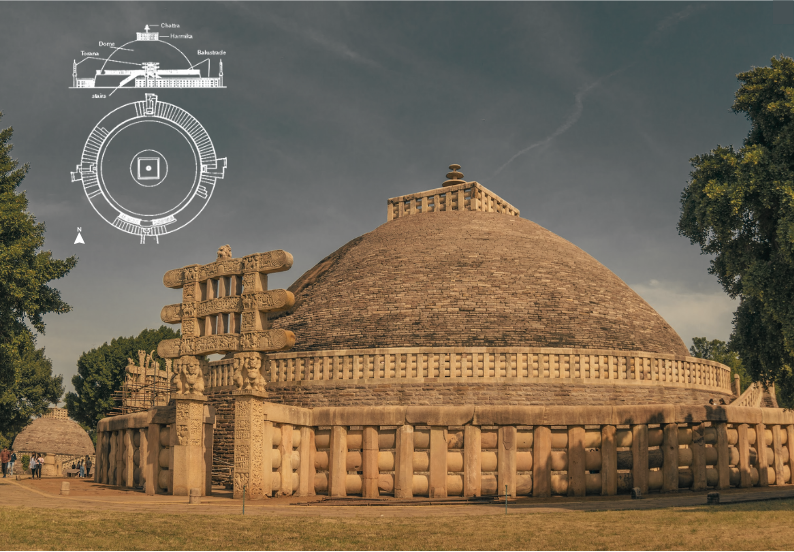

0 comments